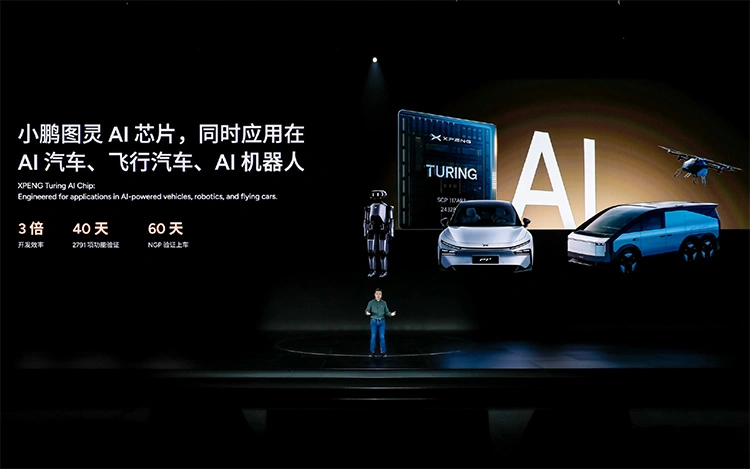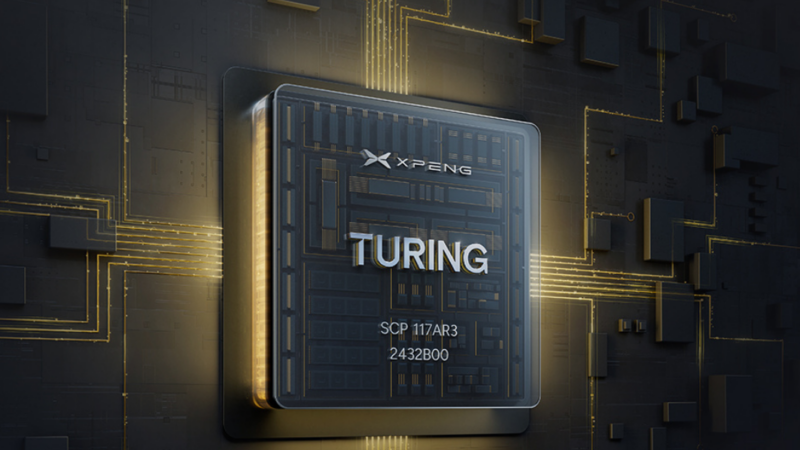Decoupling begins: Xpeng’s Turing AI chip rolls out Q2, reducing Nvidia reliance
Xpeng Motors is poised to begin mass production and deployment of its internally developed AI autonomous driving chip, dubbed “Turing,” starting in the second quarter of this year, according to company chairman He Xiaopeng. The chip, set to debut in a forthcoming new Xpeng model, represents a significant step in the company’s strategy to bolster its advanced driver-assistance systems (ADAS) capabilities and reduce its reliance on third-party semiconductor giants like Nvidia.

Development of the Turing chip began in 2020, culminating in a successful tape-out last August. Designed specifically for the demands of AI and end-to-end large models prevalent in modern ADAS architectures, the chip reportedly boasts compute power roughly equivalent to three mainstream ADAS chips (implied to be Nvidia’s Orin X) or approximately 700 TOPS (Tera Operations Per Second). This performance level positions it near Nvidia’s latest-generation AI chip, Thor, particularly the ~750 TOPS version currently being supplied.
Internal sources revealed the Turing chip integrates two proprietary neural processing units (NPUs) and features a specialised architecture optimised for neural networks. Xpeng claims this design achieves a 20% higher utilisation rate compared to general-purpose high-compute automotive chips and can locally process large AI models with up to 30 billion parameters – a substantial figure compared to current systems like Li Auto’s VLM (Vision-Language Model) with around 2.2 billion parameters. The chip also incorporates features like an independent safety island and dual independent Image Signal Processors (ISPs) for enhanced perception in challenging conditions like night driving or rain.
Xpeng’s accelerated push for its own silicon comes amid reported challenges with Nvidia’s Thor chip rollout. Initially anticipated with up to 2000 TOPS and a mid-2024 launch, industry sources indicate Nvidia has faced difficulties, primarily supplying a lower-spec version (~750 TOPS) with potential hardware and software issues. This uncertainty and potential delay impact several automakers, including Xpeng itself, BYD, Zeekr, and Li Auto, who had previously announced plans to adopt Thor. By bringing Turing to market ahead of schedule, Xpeng gains crucial control over its product roadmap and hedges against external supply chain disruptions in the fiercely competitive EV market. Chairman He Xiaopeng explicitly framed the move as enabling Xpeng to “decouple” from Nvidia.
This hardware advancement aligns with Xpeng’s ambitious software strategy centred around large AI models. The company is developing a “World Foundational Model,” targeting 72 million parameters – roughly 35 times larger than typical VLA (Vision-Language-Action) models. Xpeng’s approach involves training this colossal model in the cloud using its dedicated 10 EFLOPS computing cluster and then using knowledge distillation techniques to deploy optimised, smaller models onto the vehicle’s Turing chip. This strategy aims to overcome on-device compute limitations while leveraging the power of extremely large models for complex reasoning and control, ultimately enabling multi-modal large models to directly manage driving tasks. According to the company, early tests demonstrating a foundational model controlling a vehicle have already proven successful.

The company is targeting the initial commercialisation of L3 autonomous driving in the second half of this year, with explorations into L4 planned for 2026. Xpeng’s ambitions extend beyond passenger cars. It plans to use the Turing chip in future AI-powered robots and flying cars.



